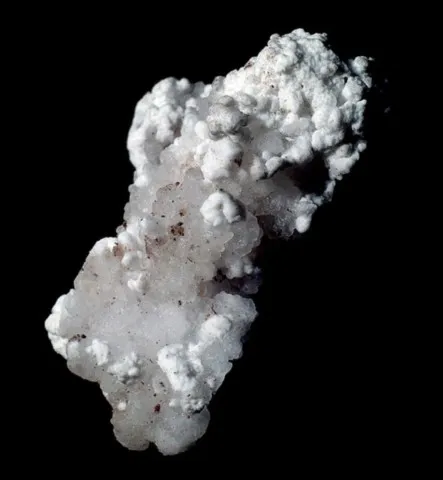HEXAHYDRITE
Class : Sulfates, chromates, molybdates
Subclass : Hydrated sulfates
Crystal system : Monoclinic
Chemistry : MgSO4 6H2O
Rarity : Uncommon
Hexahydrite is a secondary hydrated magnesium sulfate formed by partial dehydration of epsomite (loss of a water molecule), a primary mineral of evaporitic deposits or secondary of hydrothermal deposits and then formed by alteration of sulfides. Hexahydrite very frequently accompanies epsomite, which it covers with efflorescence or pseudomorph. Its name comes from the Greek hexa (six) and hudor (water) because it contains 6 water molecules per structural formula. Hexahydrite is rarely thick tabular crystals and usually occurs as efflorescences or fibrous, colorless, white or pale greenish columnar masses.
Main photo : Hexahydrite from Zastávka, Czech Republic © Zbynek Burival - White parts are dehydrated
Hexahydrite in the World
Twinning
Twins are known on {001} and on {110}.
Fakes and treatments
No fakes recorded for this mineral species.
Hardness : 2 to 2.5
Density : 1.757
Fracture : Conchoidal
Streak : White
TP : Translucent to transparent
RI : 1.426 to 1.456
Birefringence : 0.030
Optical character : Biaxial -
Pleochroism : None
Fluorescence : None
Solubility : Water
Magnetism : NoneRadioactivity : None

